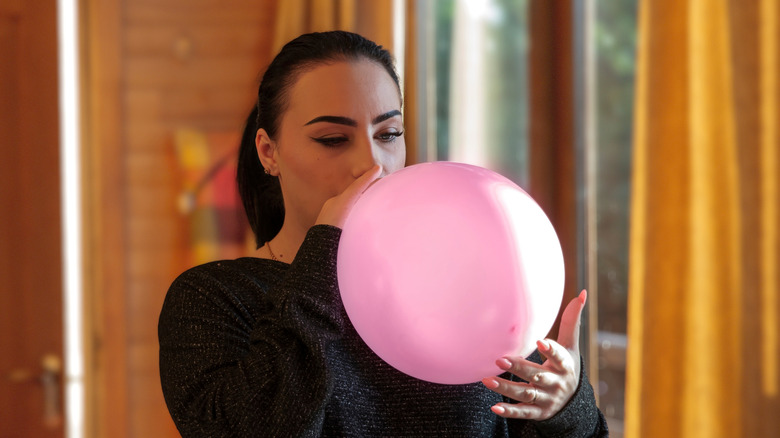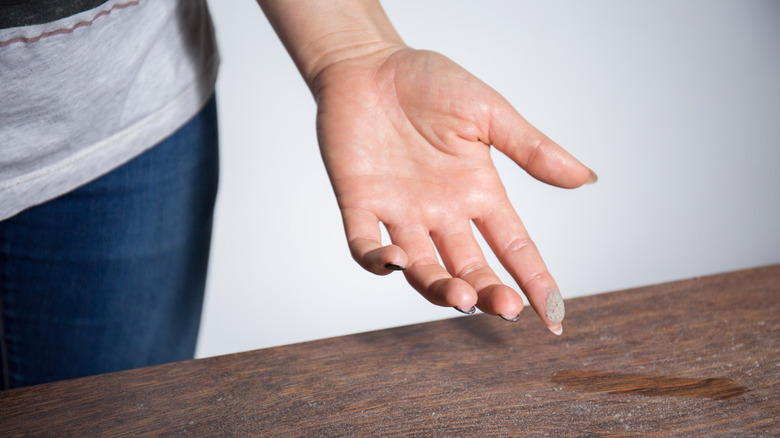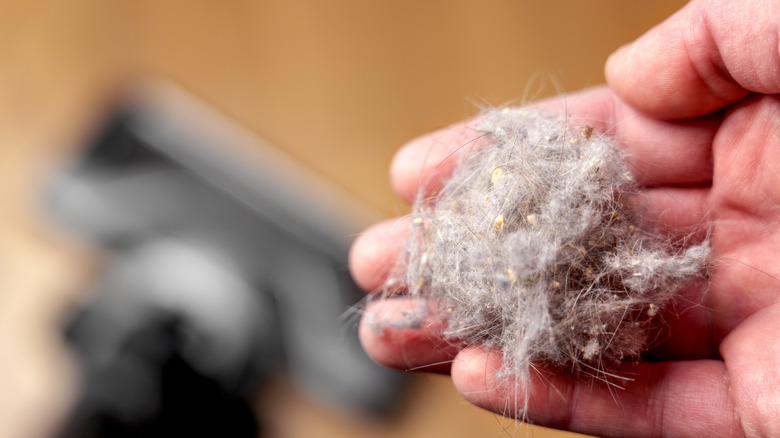Why Some People Swear By Balloons To Clean Their House (And Whether It Works)
Dusting. It's one of the house cleaning tasks that no matter how thoroughly it's done, there's always more to do. That's explains why people are always on the hunt for innovative ways to get this monotonous chore done. It seems like ideas come and go, but is the one involving a generic party balloon — with an assist from static cling — worth trying, or should it be allowed to float on by?
That hack is straightforward. Inflate a generic balloon, rub it on something that is statically charged, and use it on your dusty surfaces or areas with lots of lint and pet hair. If all goes well, it then becomes perfect way to dust delicate objects, in particular. It's important to note that the static electricity will run out, though, so you'll need to gather more at some point. While the science checks out, there aren't many other first-person accounts of people cleaning up with a balloon, which leads to questions about how well it works. So, is a leftover balloon the next must-have tool to make dusting easier, or are other genius ways to repurpose leftovers balloons around your house a better use of your time? It depends on who you ask, and apparently how many balloons you use.
Here's the science behind this balloon trick
Static electricity is a powerful thing. If a balloon's surface is charged enough, it will attract dust to it by simply being near the particles due to the opposing charges of static electricity and the dust itself. For those trying this at home, wool, polyester, and cotton fabrics and blankets (or even your own hair!) can create enough force to start your balloon dusting experiment.
The science behind this trick has to do with electrons. When you rub a balloon on a surface, there is a transfer of electrons between the two objects, leaving the balloon with a charge. It's then able to use this slight charge — and pull — to draw in lightweight items, like pieces of dust of pet hair floating around. Plus, using a balloon provides the ability to reach hard-to-get areas, such as ceiling fans, more easily than traditional dusters. An alternate version of this method is to blow up a few statically charged balloons, leave them in a dusty room for an hour or so, and be amazed due to how much dust is clinging to them when you return.
But how well does it work?
For a hack with actual science behind it, it hasn't been put to the test too often. In one Apartment Therapy experiment, it was reported that, while some dust would immediately be attracted to the balloon, the results were incomplete. The author even tried the leave-in-a room strategy with limited success, though she noted using more than one balloon in there may have yielder better results. In a YouTube video shared by creator Sirozy, it's proven that static cling can allow you to transfer dust and hair from one balloon to another, but the jury is still out on whether or not this is actually an effective enough cleaning strategy to clear a whole room or piece of furniture of dust.
Despite the lukewarm reviews, there's further proof using a balloon to dust should work. There are many tips centered on dusting balloons themselves on TikTok and Instagram, showing that balloons are, at the very least, dust magnets. However, there are likely more effective time-saving dusting hacks to try than using a balloon, no matter how cool this idea sounds.


